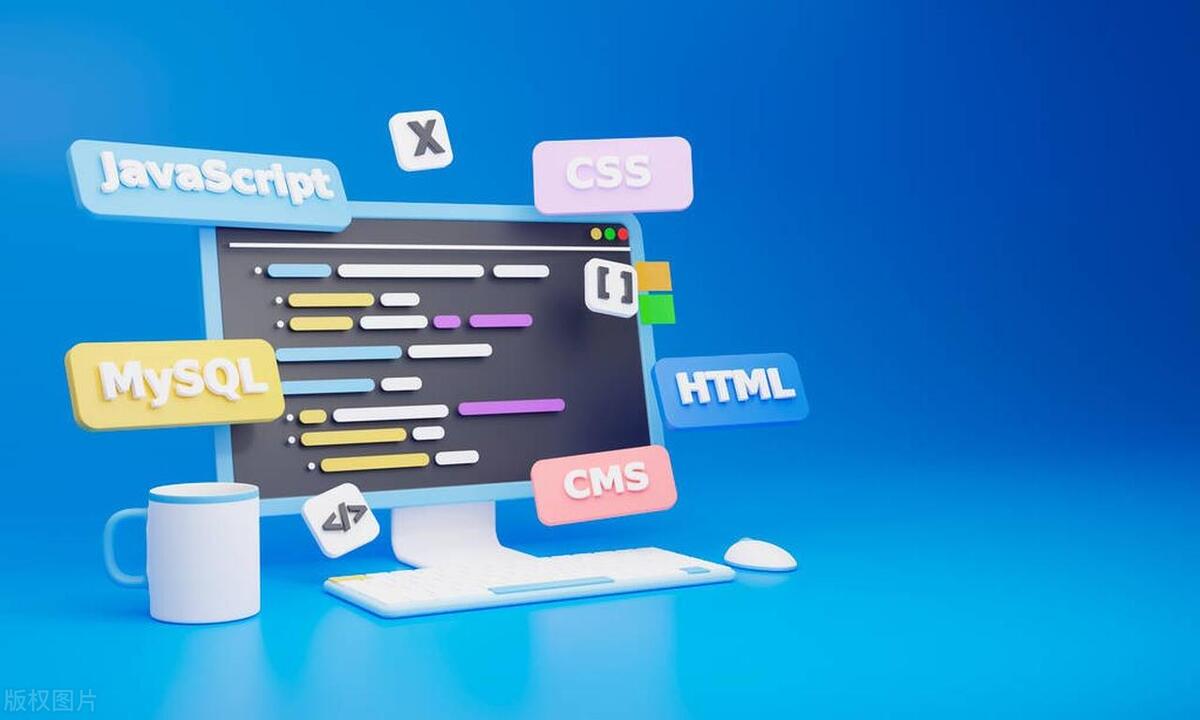Selecting Headless CMS To view the API type, editing experience and deployment method, front-end access requires defining the content model, calling the API, and rendering components. Dynamic updates can be achieved through Webhook or SSR. 1. API type determines flexibility, GraphQL is suitable for complex structures; 2. Editing experience affects team collaboration efficiency; 3. Deployment method chooses self-built or SaaS based on operation and maintenance capabilities; 4. The React access process includes defining models, obtaining API keys, requesting data, and rendering components; 5. SSG can trigger reconstruction with Webhook, and SSR can achieve quasi-real-time updates.

Using a front-end framework to connect to Headless CMS is actually not that complicated. The focus is to understand the division of labor between the two: CMS provides content data, and the front-end framework is responsible for presentation and interaction. As long as you open the interface, the rest is how to organize the page structure and process dynamic content.

How to choose the right Headless CMS
The mainstream on the market include Contentful, Sanity, Strapi, Directus, etc., each with its own characteristics. When choosing, we mainly look at three points:
- API type : GraphQL or REST? GraphQL is more flexible and suitable for projects with complex data structures.
- Editing Experience : If you need teamwork or non-technical personnel to participate in content management, it is important to be friendly to the editor’s backend.
- Deployment method : Some CMS supports self-built (such as Strapi), while others are SaaS mode (such as Contentful), which is determined based on your operation and maintenance capabilities and budget.
For example, if you build a blog website, it may be enough to use Sanity directly; but if you want to build an enterprise-level site, you may prefer Contentful or Strapi to build it yourself.

How to connect to CMS data in front-end framework
Taking React as an example, the process is roughly as follows:
- Define the content model in CMS (for example, BlogPost contains title, slug, and body).
- Gets the API key and access address (usually GraphQL or REST interface).
- Request data using Axios or Apollo Client (if GraphQL) in front-end projects.
- Render the data into the component.
If it is Next.js, you can use getStaticProps and getStaticPaths to pre-generate pages, which is SEO-friendly.

For example:
If you want to display a blog post, first click /blog-posts?slug=xxx interface to get the data, and then pass it to a BlogPost component, and display the title, text and other fields. If there is rich text in the content, remember to parse it into HTML or React components.
How to update dynamic content and live preview
The question that many users are concerned about is: After the content is changed, can the front-end be seen immediately? It depends on your deployment strategy.
- If you are using static generation (SSG), then the CMS will not take effect immediately after the update, and you have to rebuild the deployment. The solution is to configure the webhook to trigger the CI/CD process when the CMS content is updated.
- If you use server rendering (such as SSR or ISR), you can achieve "quasi-real-time" and pull the latest content every time you visit.
In addition, many CMSs provide Preview mode, allowing you to see effects before publishing. The implementation method is generally to add an environment judgment: bypass the cache in preview mode and directly retrieve the content from the draft data source.
Basically that's it. The key to integration is not technical difficulty, but clarifying content flow and rendering logic. Once it is done once, the subsequent framework or CMS will be replaced, and the ideas will be similar.
The above is the detailed content of Headless CMS Integration with Frontend Frameworks. For more information, please follow other related articles on the PHP Chinese website!

Hot AI Tools

Undress AI Tool
Undress images for free

Undresser.AI Undress
AI-powered app for creating realistic nude photos

AI Clothes Remover
Online AI tool for removing clothes from photos.

Clothoff.io
AI clothes remover

Video Face Swap
Swap faces in any video effortlessly with our completely free AI face swap tool!

Hot Article

Hot Tools

Notepad++7.3.1
Easy-to-use and free code editor

SublimeText3 Chinese version
Chinese version, very easy to use

Zend Studio 13.0.1
Powerful PHP integrated development environment

Dreamweaver CS6
Visual web development tools

SublimeText3 Mac version
God-level code editing software (SublimeText3)
 How does React handle focus management and accessibility?
Jul 08, 2025 am 02:34 AM
How does React handle focus management and accessibility?
Jul 08, 2025 am 02:34 AM
React itself does not directly manage focus or accessibility, but provides tools to effectively deal with these issues. 1. Use Refs to programmatically manage focus, such as setting element focus through useRef; 2. Use ARIA attributes to improve accessibility, such as defining the structure and state of tab components; 3. Pay attention to keyboard navigation to ensure that the focus logic in components such as modal boxes is clear; 4. Try to use native HTML elements to reduce the workload and error risk of custom implementation; 5. React assists accessibility by controlling the DOM and adding ARIA attributes, but the correct use still depends on developers.
 Describe the difference between shallow and full rendering in React testing.
Jul 06, 2025 am 02:32 AM
Describe the difference between shallow and full rendering in React testing.
Jul 06, 2025 am 02:32 AM
Shallowrenderingtestsacomponentinisolation,withoutchildren,whilefullrenderingincludesallchildcomponents.Shallowrenderingisgoodfortestingacomponent’sownlogicandmarkup,offeringfasterexecutionandisolationfromchildbehavior,butlacksfulllifecycleandDOMinte
 What is the significance of the StrictMode component in React?
Jul 06, 2025 am 02:33 AM
What is the significance of the StrictMode component in React?
Jul 06, 2025 am 02:33 AM
StrictMode does not render any visual content in React, but it is very useful during development. Its main function is to help developers identify potential problems, especially those that may cause bugs or unexpected behavior in complex applications. Specifically, it flags unsafe lifecycle methods, recognizes side effects in render functions, and warns about the use of old string refAPI. In addition, it can expose these side effects by intentionally repeating calls to certain functions, thereby prompting developers to move related operations to appropriate locations, such as the useEffect hook. At the same time, it encourages the use of newer ref methods such as useRef or callback ref instead of string ref. To use Stri effectively
 Vue with TypeScript Integration Guide
Jul 05, 2025 am 02:29 AM
Vue with TypeScript Integration Guide
Jul 05, 2025 am 02:29 AM
Create TypeScript-enabled projects using VueCLI or Vite, which can be quickly initialized through interactive selection features or using templates. Use tags in components to implement type inference with defineComponent, and it is recommended to explicitly declare props and emits types, and use interface or type to define complex structures. It is recommended to explicitly label types when using ref and reactive in setup functions to improve code maintainability and collaboration efficiency.
 Server-Side Rendering with Next.js Explained
Jul 23, 2025 am 01:39 AM
Server-Side Rendering with Next.js Explained
Jul 23, 2025 am 01:39 AM
Server-siderendering(SSR)inNext.jsgeneratesHTMLontheserverforeachrequest,improvingperformanceandSEO.1.SSRisidealfordynamiccontentthatchangesfrequently,suchasuserdashboards.2.ItusesgetServerSidePropstofetchdataperrequestandpassittothecomponent.3.UseSS
 A Deep Dive into WebAssembly (WASM) for Front-End Developers
Jul 27, 2025 am 12:32 AM
A Deep Dive into WebAssembly (WASM) for Front-End Developers
Jul 27, 2025 am 12:32 AM
WebAssembly(WASM)isagame-changerforfront-enddevelopersseekinghigh-performancewebapplications.1.WASMisabinaryinstructionformatthatrunsatnear-nativespeed,enablinglanguageslikeRust,C ,andGotoexecuteinthebrowser.2.ItcomplementsJavaScriptratherthanreplac
 Vue CLI vs Vite: Choosing Your Build Tool
Jul 06, 2025 am 02:34 AM
Vue CLI vs Vite: Choosing Your Build Tool
Jul 06, 2025 am 02:34 AM
Vite or VueCLI depends on project requirements and development priorities. 1. Startup speed: Vite uses the browser's native ES module loading mechanism, which is extremely fast and cold-start, usually completed within 300ms, while VueCLI uses Webpack to rely on packaging and is slow to start; 2. Configuration complexity: Vite starts with zero configuration, has a rich plug-in ecosystem, which is suitable for modern front-end technology stacks, VueCLI provides comprehensive configuration options, suitable for enterprise-level customization but has high learning costs; 3. Applicable project types: Vite is suitable for small projects, rapid prototype development and projects using Vue3, VueCLI is more suitable for medium and large enterprise projects or projects that need to be compatible with Vue2; 4. Plug-in ecosystem: VueCLI is perfect but has slow updates,
 How to manage component state using immutable updates in React?
Jul 10, 2025 pm 12:57 PM
How to manage component state using immutable updates in React?
Jul 10, 2025 pm 12:57 PM
Immutable updates are crucial in React because it ensures that state changes can be detected correctly, triggering component re-rendering and avoiding side effects. Directly modifying state, such as push or assignment, will cause React to be unable to detect changes. The correct way to do this is to create new objects instead of old objects, such as updating an array or object using the expand operator. For nested structures, you need to copy layer by layer and modify only the target part, such as using multiple expansion operators to deal with deep attributes. Common operations include updating array elements with maps, deleting elements with filters, adding elements with slices or expansion. Tool libraries such as Immer can simplify the process, allowing "seemingly" to modify the original state but generate new copies, but increase project complexity. Key tips include each






